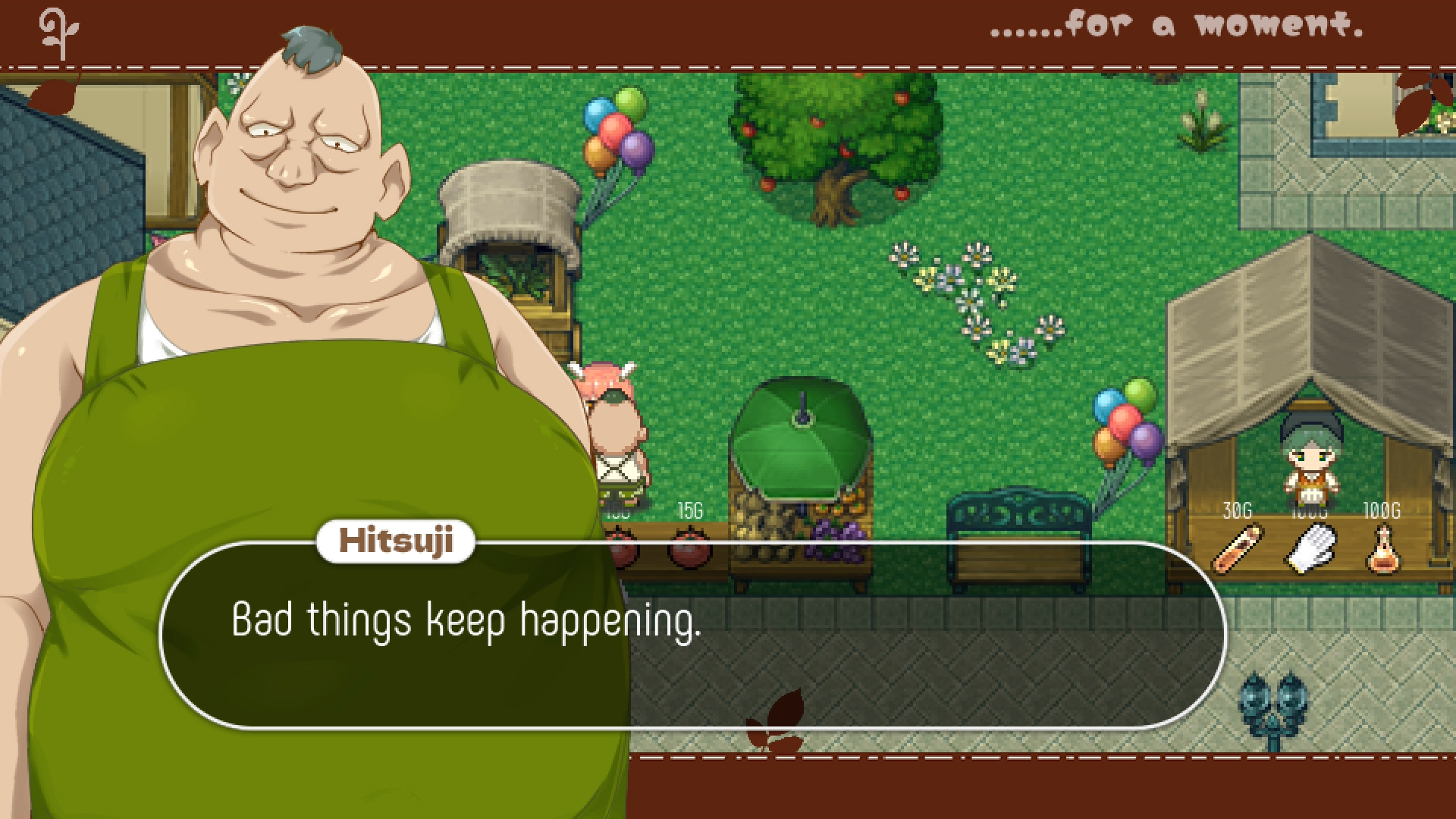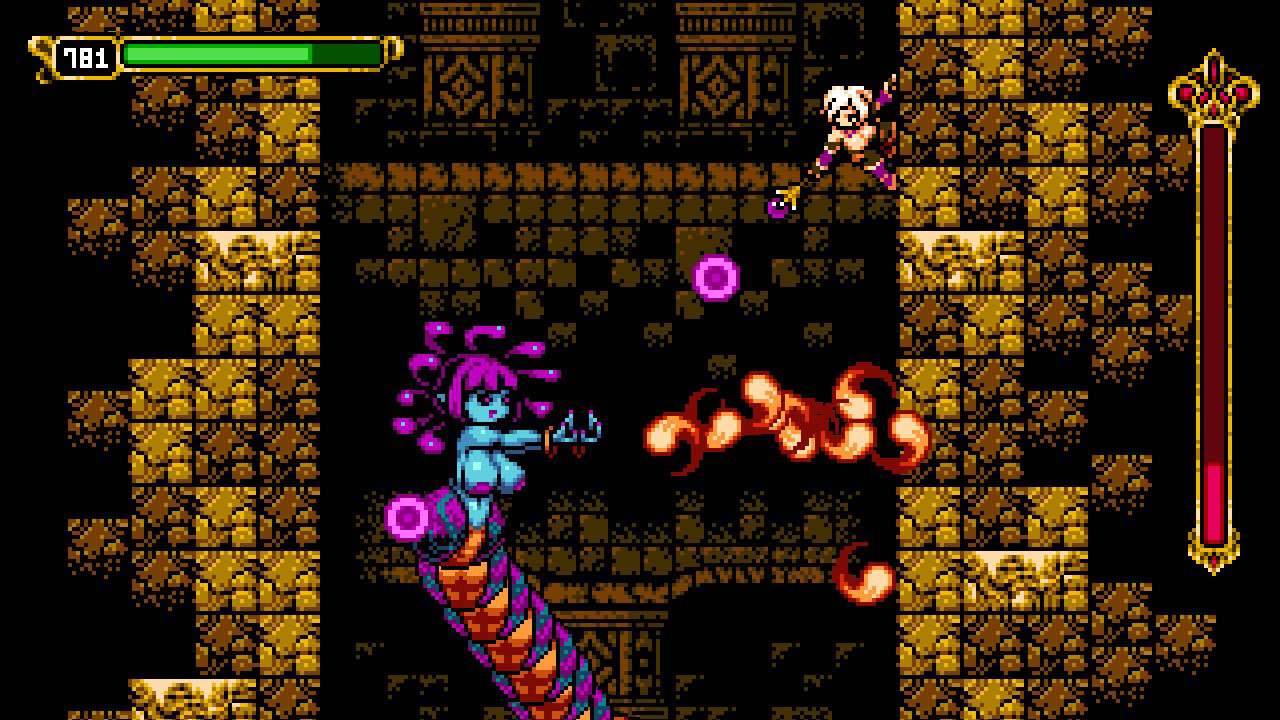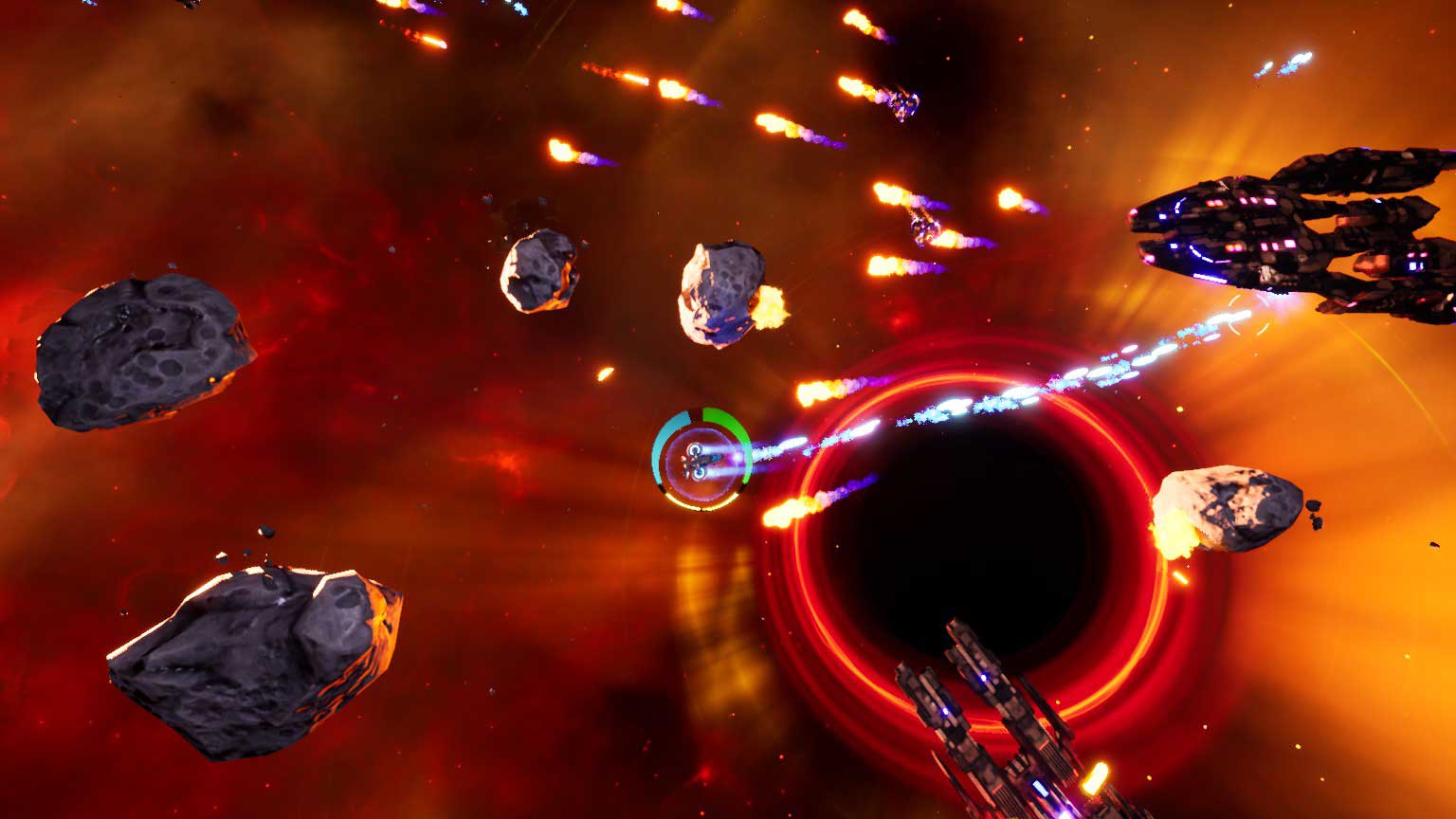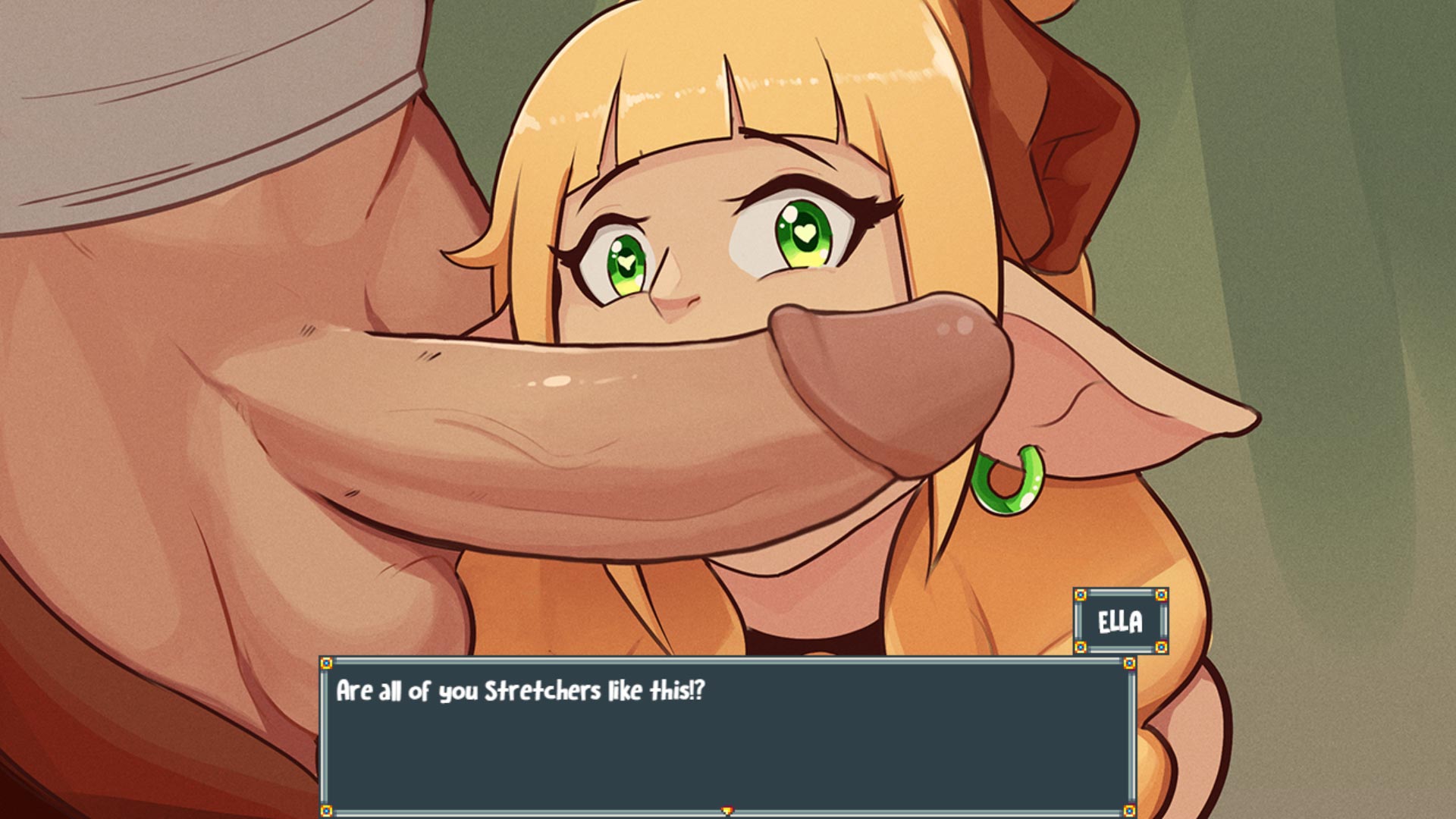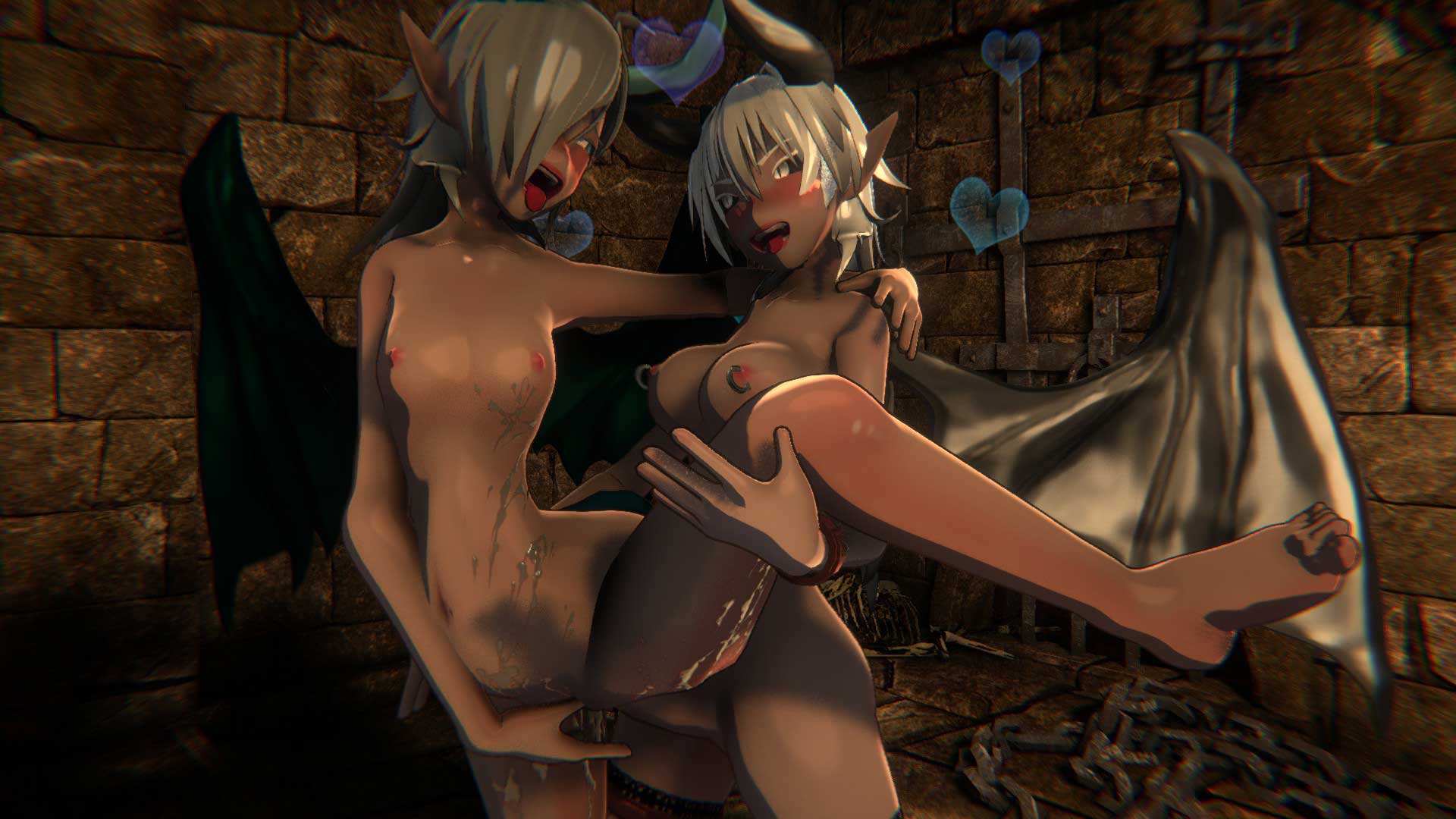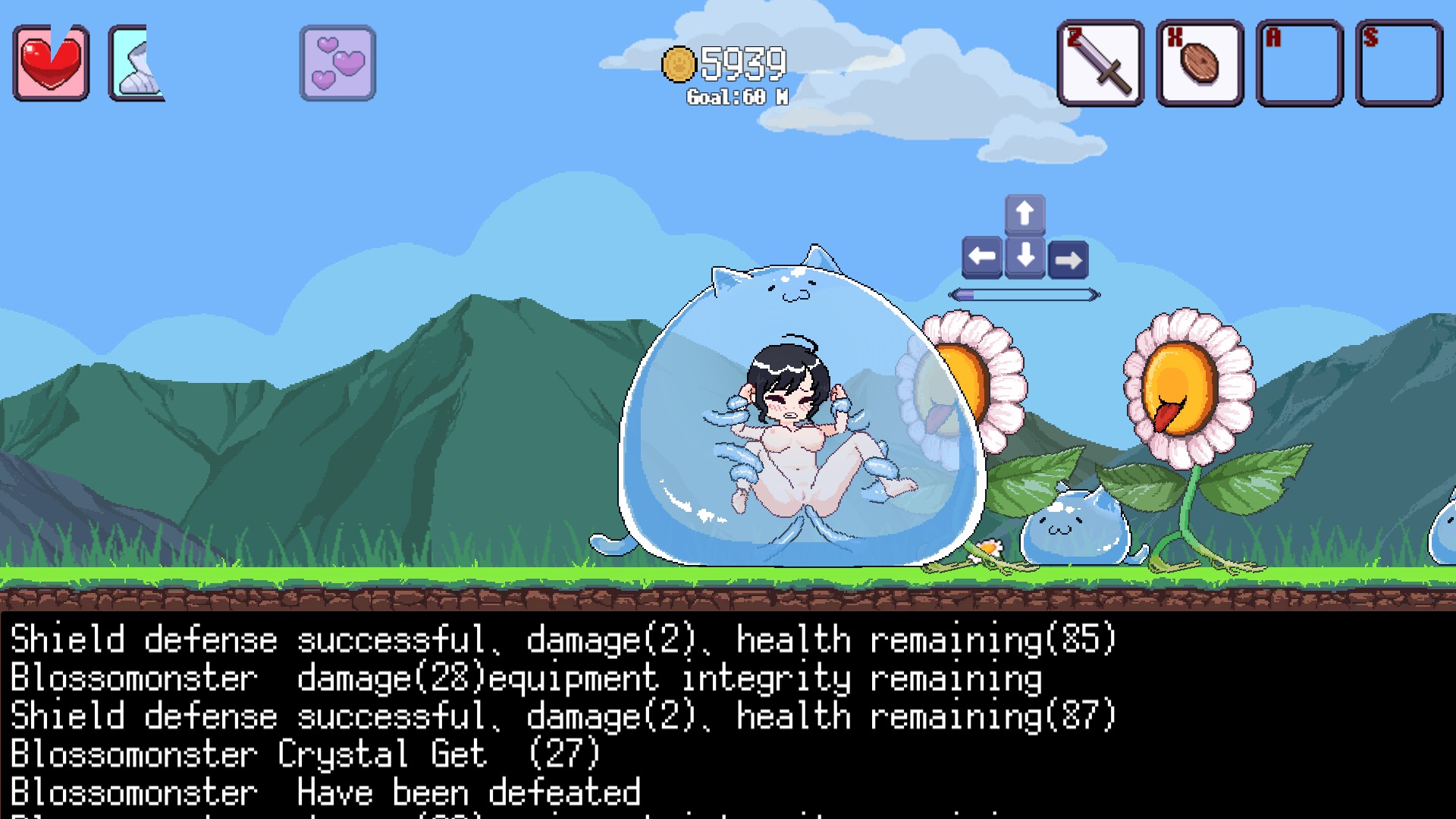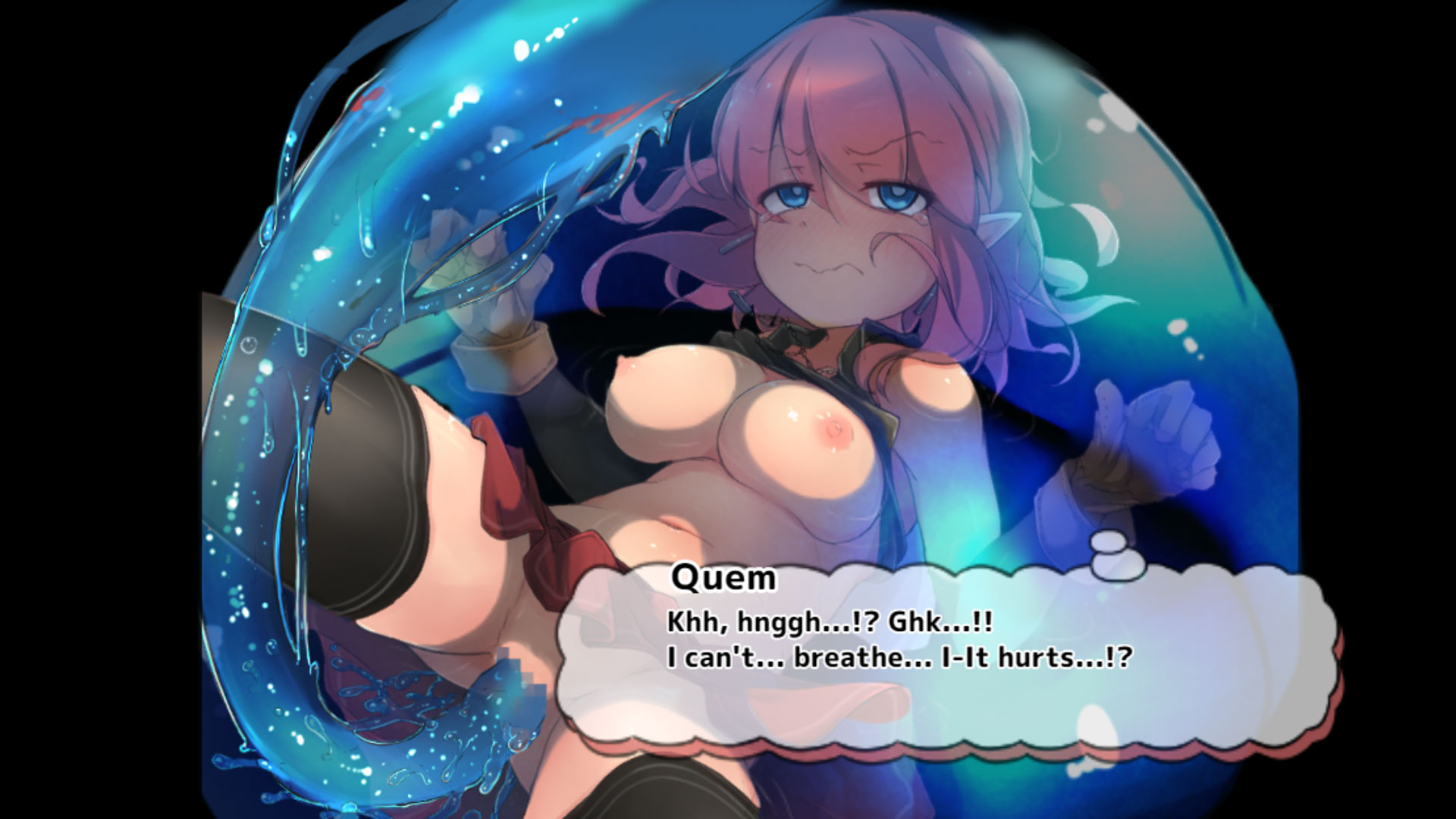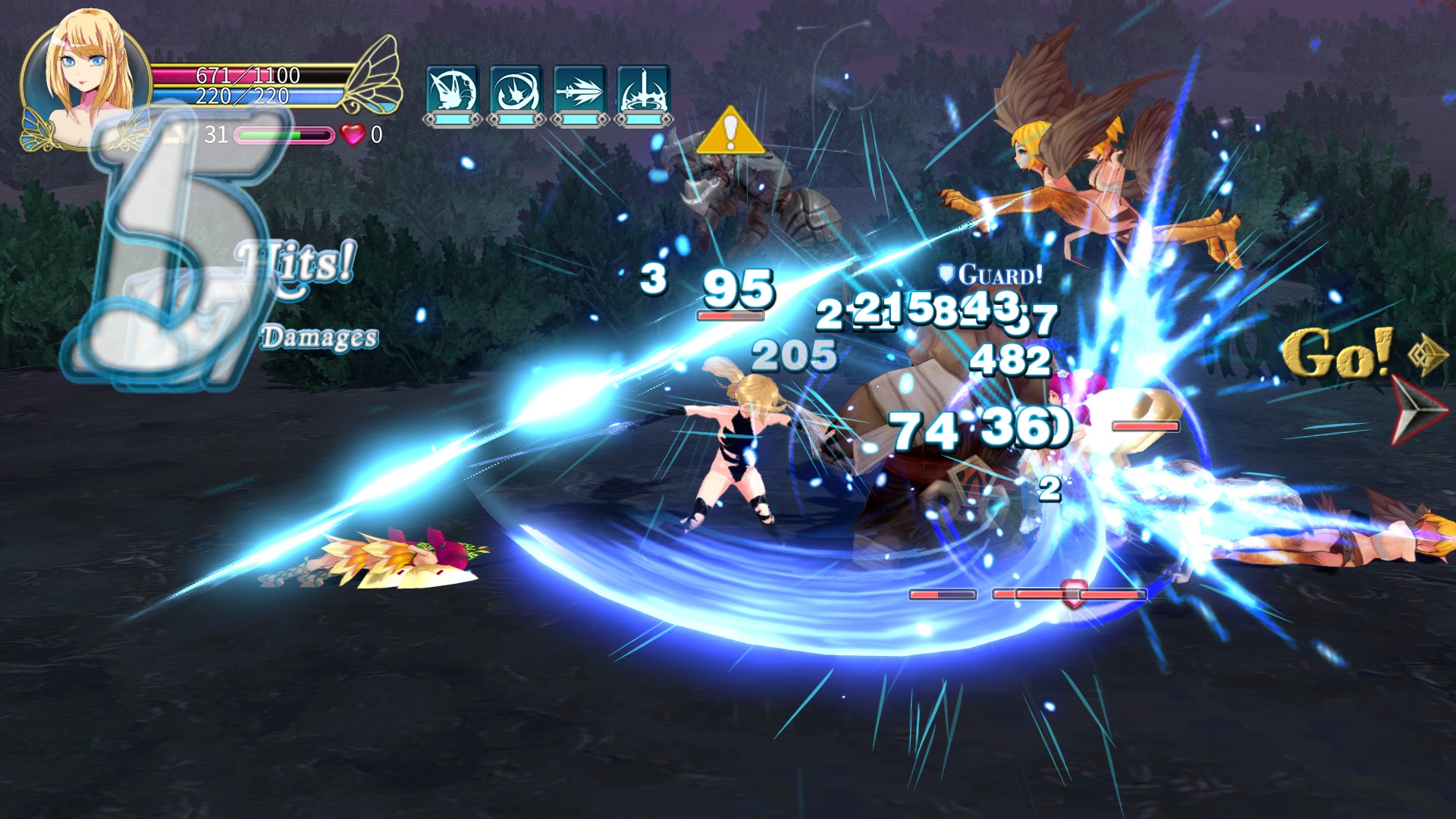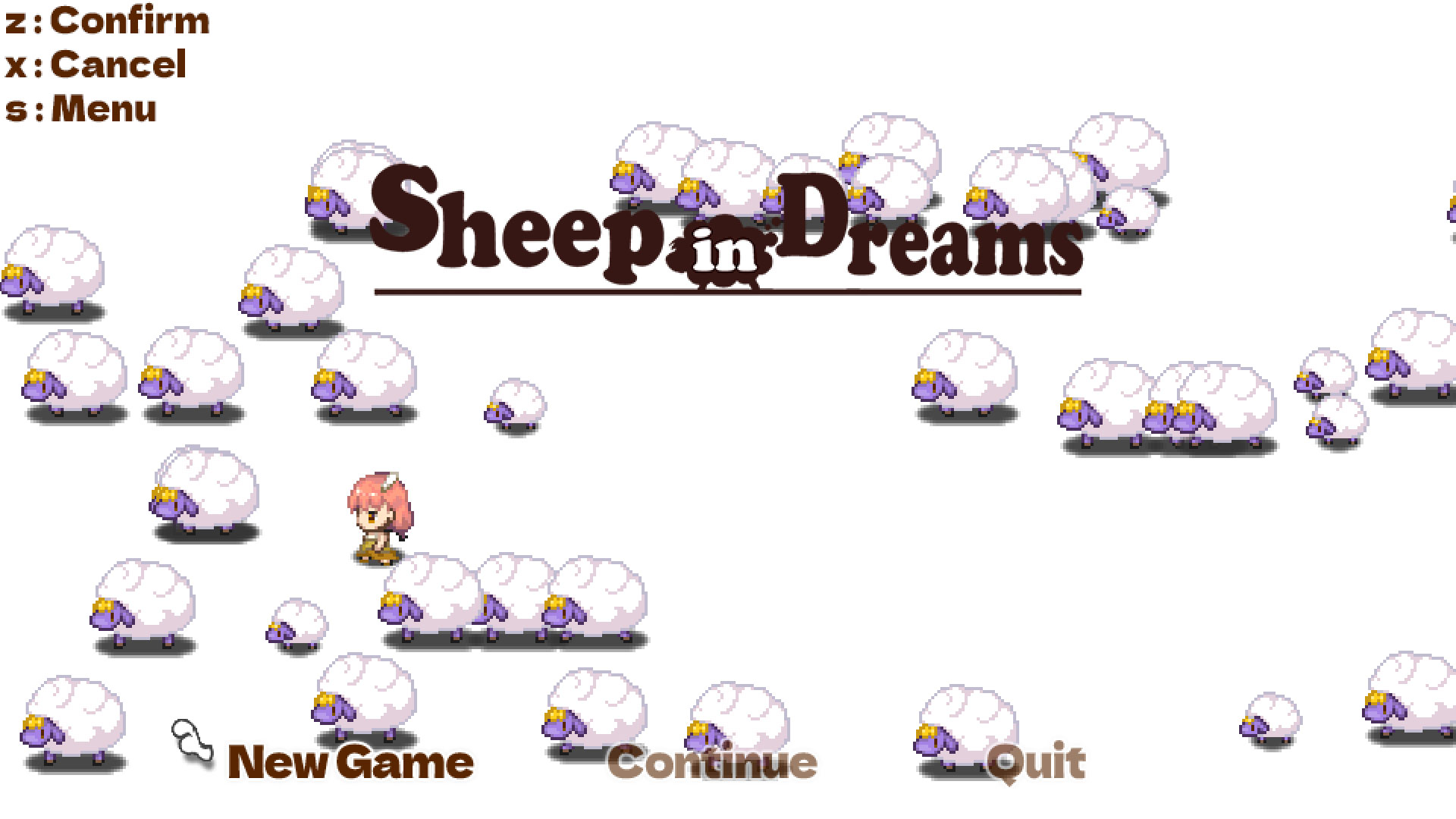
Chapter One: Introduction
I recieved a free copy of this game for review purposes — thanks OTAKU Plan!
Sheep in Dreams is a lewd action-RPG available on Steam. To experience adult content, the Sheep In Dreams Patch must be installed from Otaku-Plan’s website. Before running the installer, it’s important to run Sheep in Dreams at least once.
This article is only applicable for the patched version of the game.
I spent roughly six hours to complete this game due to crashing. The problem with this game is that it only allows you to save before entering a “Dream Dungeon”. There is little you can do to reduce the damage caused by the application crashing.
Frustratingly, my progress was reset at least four times during my playthrough.

Chapter Two: Gameplay (2/5★)
Section One: Overview
Every night, Hitsuji awakes in a randomized “Dream Dungeon”. Vaguely related to the real world, she must complete each dream to ultimately reveal the purpose behind the “Dreamsheep”.
But the dream world is no place for “small children”. To defend her chastity, Hitsuji must take advantage of randomized weapons and equipment — and fill her tummy with randomized food!
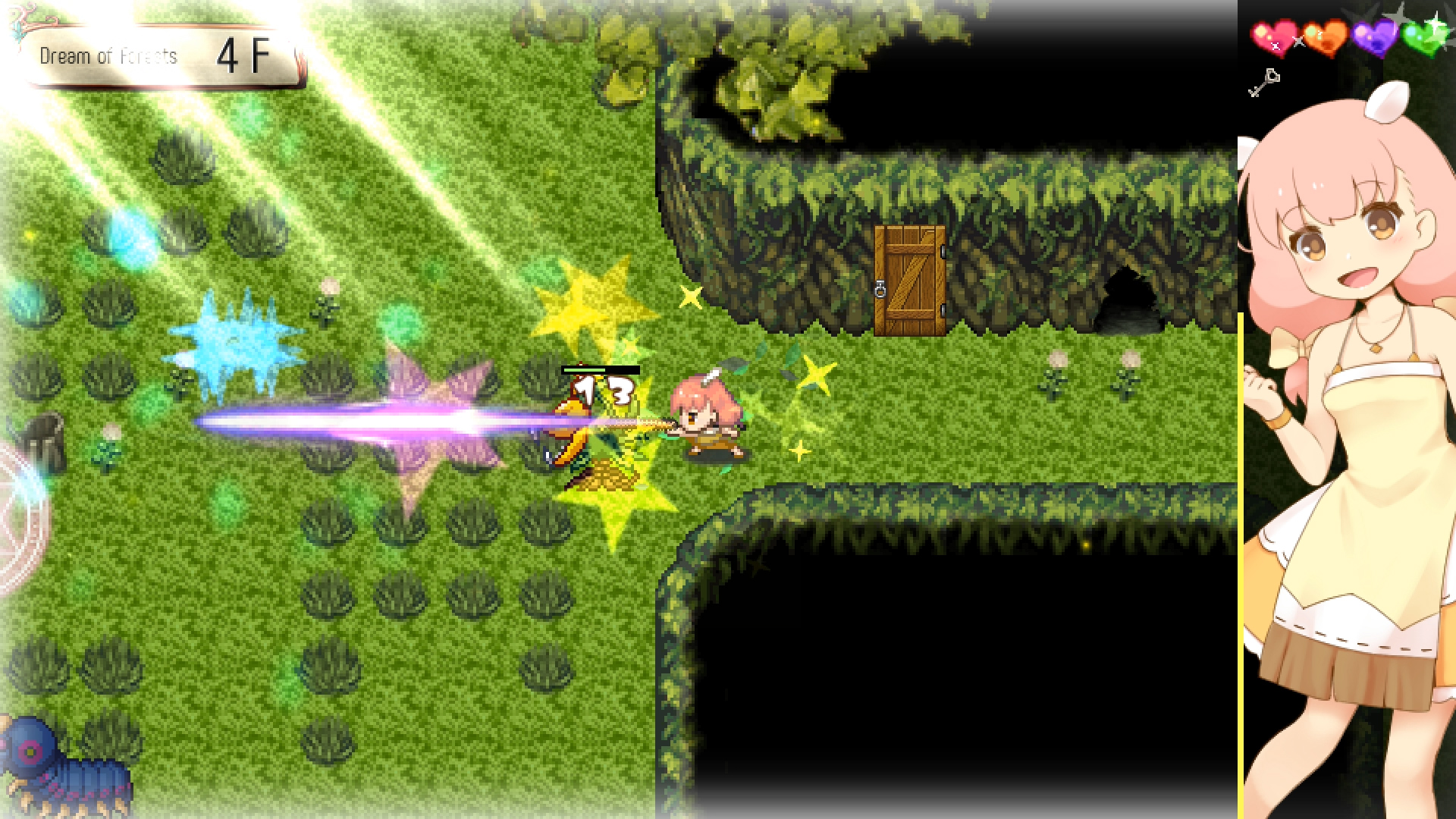
Section Two: Combat
Combat is really dull. Enemies will not attack after taking damage, allowing Hitsuji to effectively stun-lock them indefinitely. Bosses are the only foes that are not stunned from damage, increasing the stakes of battle dramatically.
Interestingly, there are few enemies in the game with ranged attacks; projectiles would encourage the player to move, allowing enemies a chance to recover from damage. In the following clip, I engage a swarm of enemies. At the time, I was unaware of the stun mechanic.
Whenever Hitsuji receives damage, she loses “energy” (represented by colored hearts). If she runs out of energy, her inventory is forfeit and a sex-scene is played.
In addition to conserving energy, Hitsuji must keep her tummy filled with whatever grub she finds. I never found out what happens when she starves — but I don’t imagine it’s good.
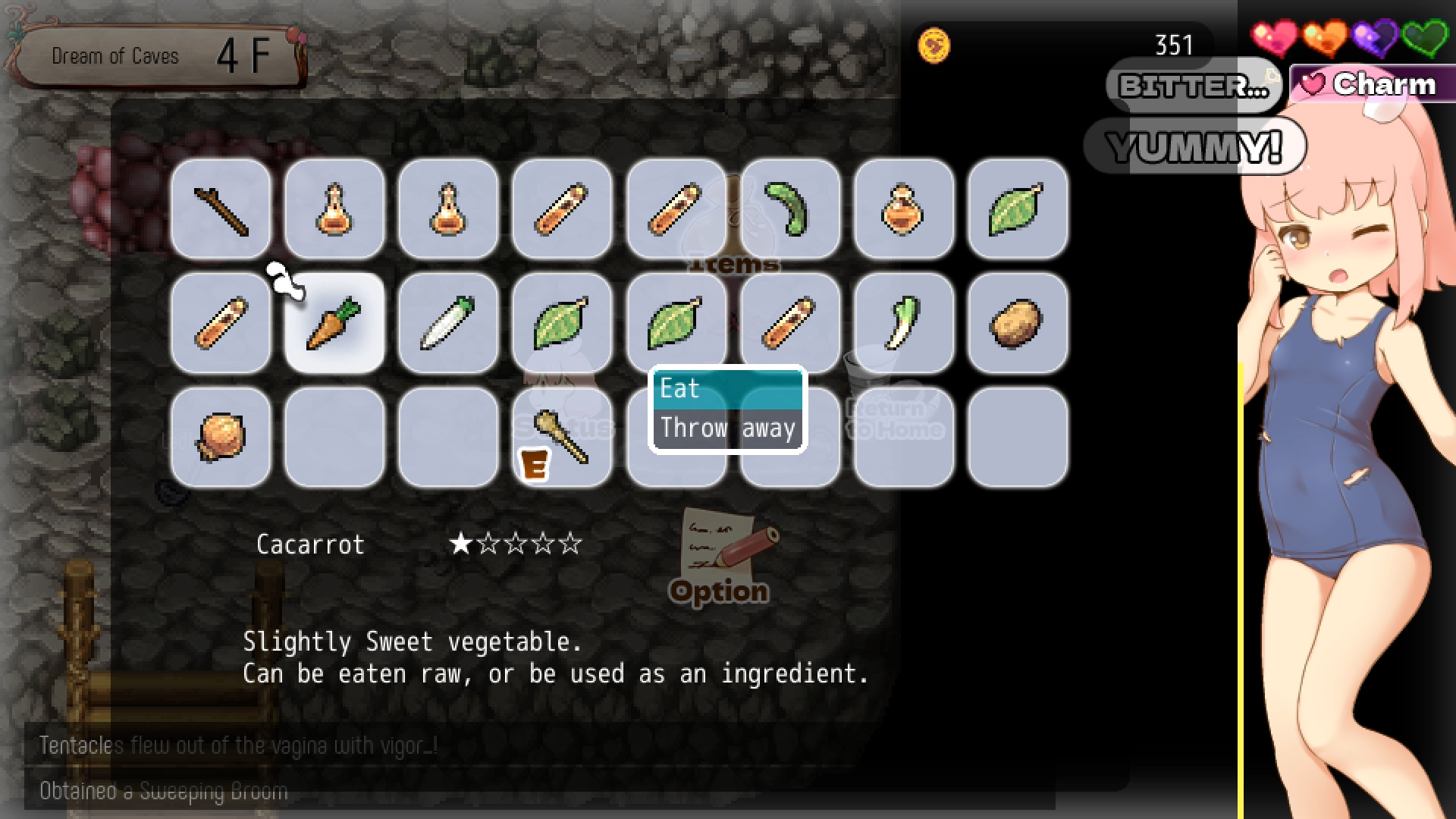
Section Three: Progression
There is no leveling system; in fact, there there is virtually no reason to attack foes for any other reason than searching for “keys” to unlock the next area. Progression is instead determined by randomized loot purchased from the “Marketplace” or acquired from rare “treasure chests”.
The effectiveness of loot is measured on a scale of one to five. I never experienced anything rarer than a “three” — anything more is prohibitively expensive and unreasonably rare.
Section Four: Exploration
Dream Dungeons are divided into ten locked “floors”. To progress, Hitsuji must either find a “key to something” or defeat a powerful, boss-type enemy. After completing a Dream Dungeon, she gains the option to “Return to Home” with her inventory intact. The ability to Return to Home allows her to safely explore Dungeons without conserving resources.
Scattered amongst Dream Dungeons are “treasure chests”, the most reliable source of loot in the game. Alternatively “spell circles” (for lack of a better word) can give and take money, spawn treasure chests, or even teleport the player into harm’s way. It’s tempting to take chances with spell circles, but they’re risky gambles when Hitsuji can’t return to home.
Section Five: Balance
As a roguelike, death carries a penalty; Hitsuji loses everything but her money. In theory, this mechanic allows Hitsuji to prepare for her next Dungeon by purchasing gear from the “Marketplace”. But even after beating the game, Hitsuji still couldn’t afford to buy anything better than what she already. Unless players are expected to playthrough the game twice or never purchase health-restoring “drinks”, I’m unsure if they are expected to purchase equipment.
In fact, death is so penalizing its usually better to restart the game. It’s impractical to progress without a truckload of potions and a decent weapon. Since purchasing weapons is out of the question, the only way to effectively recover lost progress is to restart from the beginning of the game and hope for worthwhile “treasure chests”. Resetting the game is as easy as “F5”.
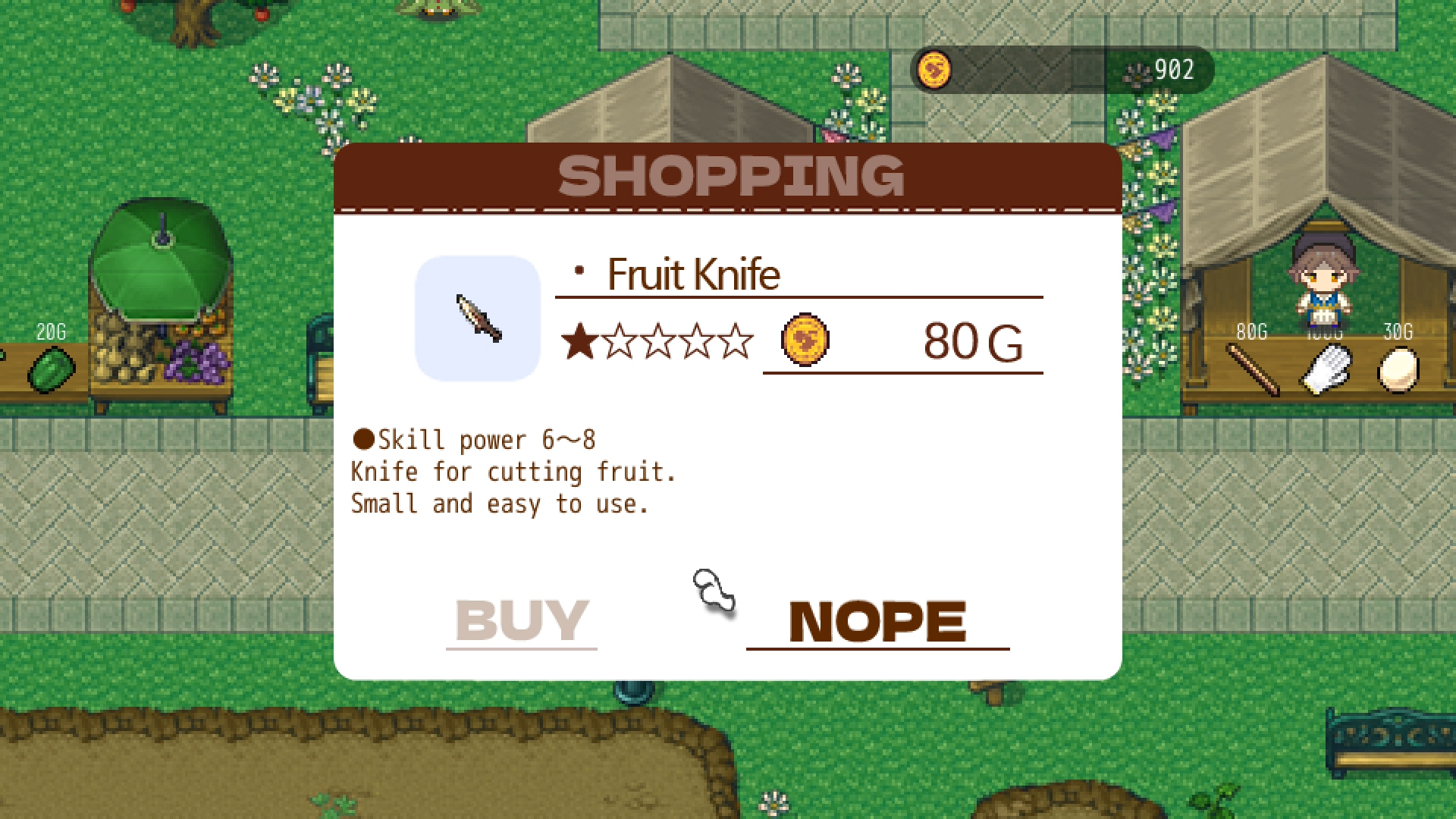
Section Six: Controls
I could never get used to the controls. Sheep in Dreams controls with the arrow keys, which is typical, for RPGs. But the rest of the game is controlled using “A”, “S”, “Z”, and “X” — a cramped section of the keyboard ill-suited for action. I would have preferred the controls to span from z to v, a row of keys to allow my fingers to maintain a natural resting position instead of a claw.
Players are only allowed to save in Hitsuji’s home. As a result, it feels really bad when the game crashes, deleting what was as much as an hour of slogging through combat. After the third crash, I lost confidence in the application and avoided spending unnecessary time in Dream Dungeons.
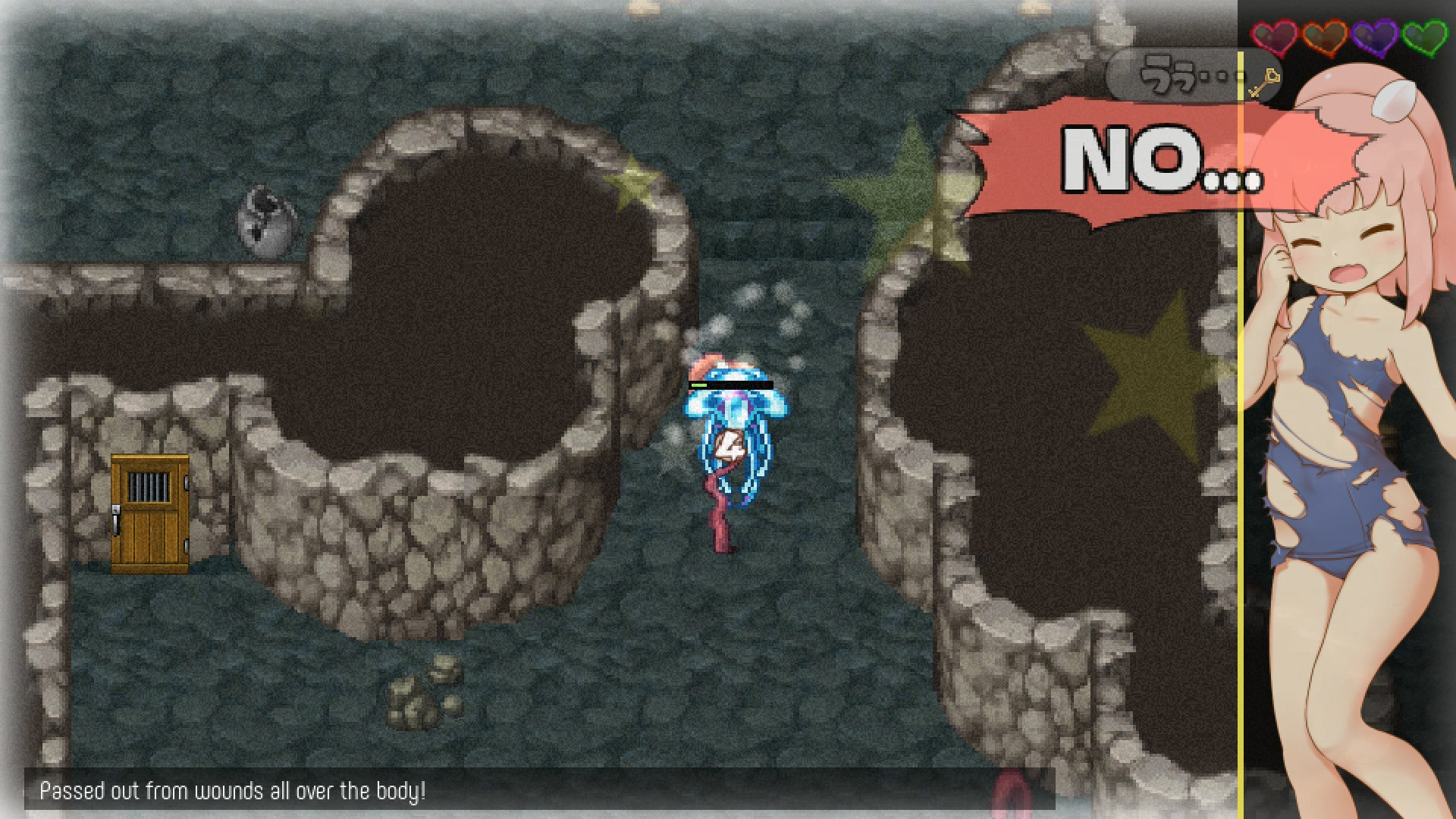
Chapter Three: Sexual Content (4/5★)
Section One: Content
There are thirty-four “dot attacks” and twelve full-art scenes. There is no consensual sex in this game. Hitsuji is the object of desire for all monsters! Unfortunately, the Hitsuji is the only character in the game with sexual content. Her friends and family don’t even get naked!
I was really looking forward to seeing Yakaba’s boobies!
At the end of the game, an unnamed character refers to Hitsuji and her friends as “young kids”, implying they’re underage. But if Hitsuji isn’t already “loli” enough for your tastes, there’s a point in the story where she is referred to as an infant. After completing the game, her infant “outfit” can be toggled for enjoying sexual content with a fresh coat of paint.
Section Two: Implementation
It’s worth noting not all animations are uncensored.
When Hitsuji is damaged, there is a good chance she will be knocked down. Nearby enemies will swarm and rape her until the player breaks free by mashing the arrow keys back and forth. No damage is dealt while she is raped, allowing players to take their time before breaking free.
In the following clip, Hitsuji loses her chastity to a group of “Wararaji”.
Hitsuji is typically impregnated after she is raped. Once her children are ready to be birthed, she is forced to lie still as an animation is played. Unfortunately, Hitsuji’s children they don’t do anything helpful like attacking enemies.
If she is defeated in battle, she will be carried away to a “mysterious dungeon”. The mysterious dungeon is a place where she is be raped until the player accepts defeat. If instead she is defeated by a boss-type enemy, a sex-scene with full-art images will be played.
The following clip shows a mysterious dungeon inhabited by tentacles.
Section Three: Interactivity
Unfortunately, the sexual content is not interactive.
After completing the game, players can customize sexual content using the “Extras” menu. However, the animations are not voiced for some reason — it’s better to view them in-game, complete with voice acting and a considerably less cluttered UI.
The following image shows a scene created using the “Extras” menu.
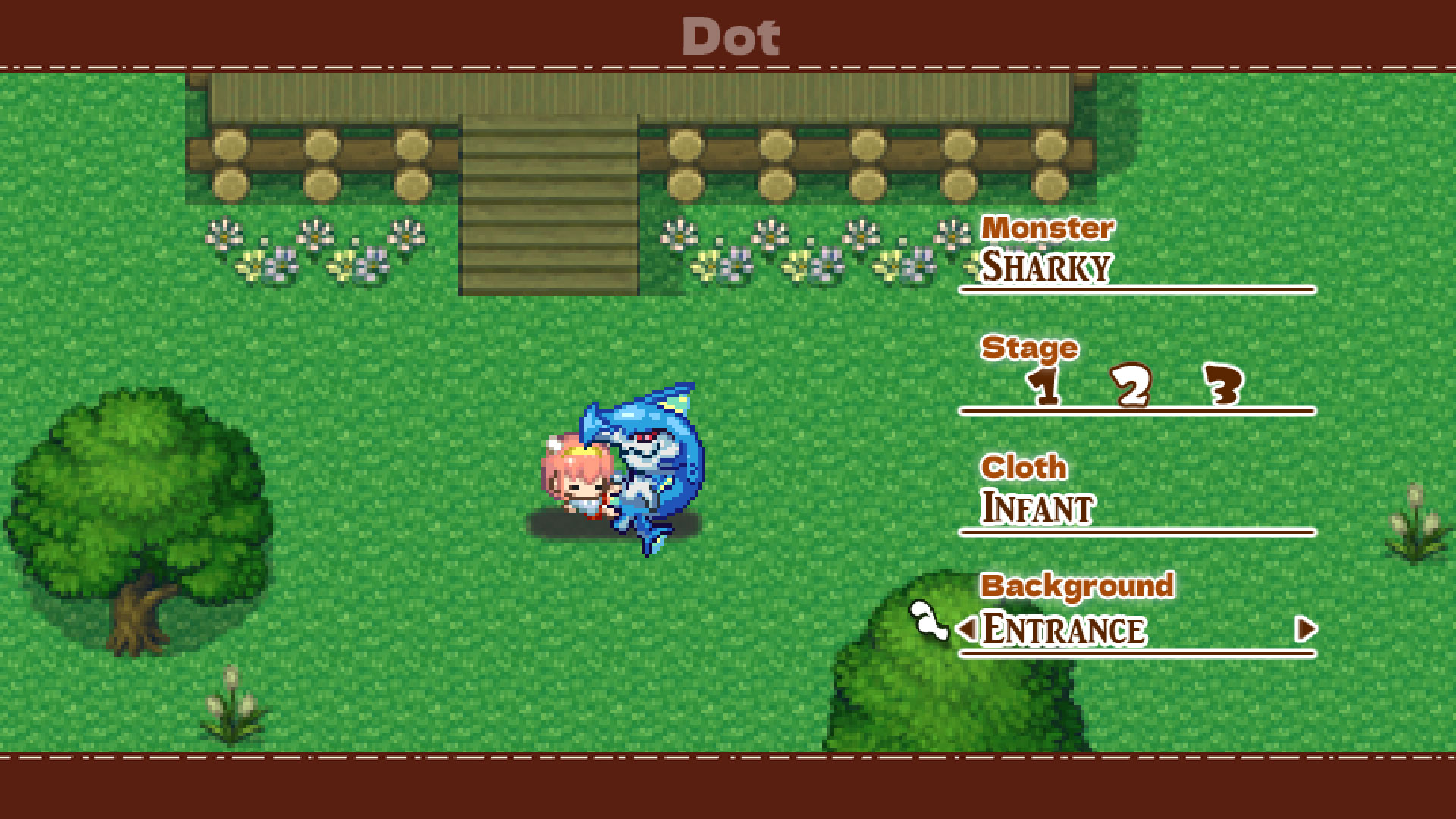
Section Four: Quality
The sex-scenes are hot with beautiful art pieces and loud, visceral voice acting. The dialogue may be poorly translated, but it reads well enough to garner a understanding of Hitsugi’s torment.
The rape animations which play when she is knocked down are a lot of fun to watch — I’m glad they loop infinitely. However, players that are specifically interested in watching her give birth to “monsters” will be sorely disappointed. The birthing animation not only doesn’t loop, it’s the same for all creatures. In some cases, the screen will simply fade the black. How disappointing!
The following clip is but a sample of what happens when Hitsuji is defeated by the first boss!
Chapter Four: Story (2/5★)
Section One: Summary
After starting a new game Hitsuji explains, “Relatively recently, Sheep have been appearing in [her] house”. Originating from her little brother’s head, Hitsuji is blissfully unaware of their significance.
Someday, when the time is right, they’ll save the world.
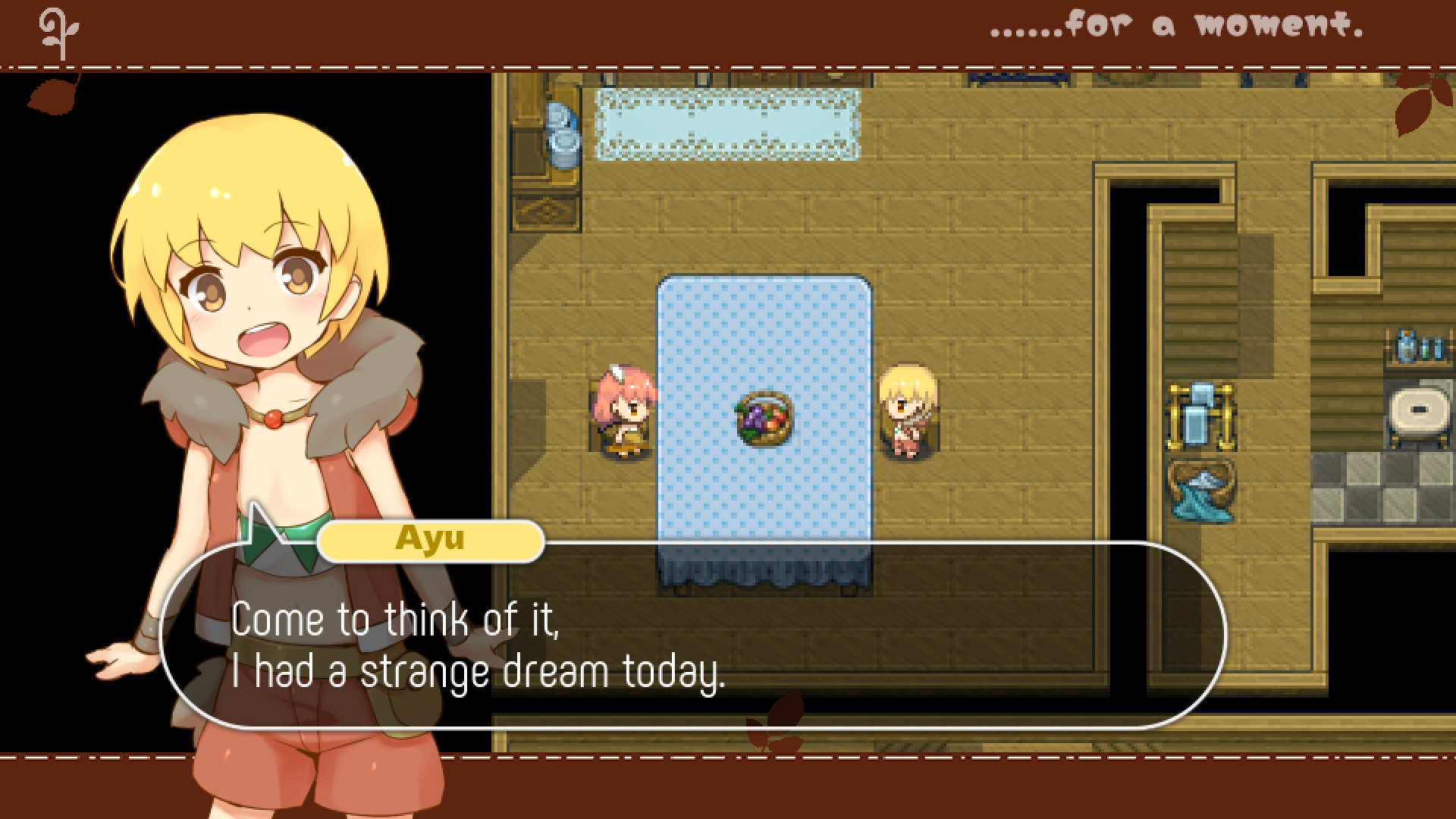
Section Two: Characters
Hitsuji is a “happy-go-lucky girl”. Whether it be an earthquake, gangrape or the weight of the world, at the end of the day she’s just a helping hand for the community. Her little brother, Ayu is more of the same; he’s just a child without a care in the world.
Wakaba, Hitsuji’s friend offers humorous respite between dream dungeons. She’s of lesser plot relevance than even Amu, but she does a nice job humanizing him and his big sister.
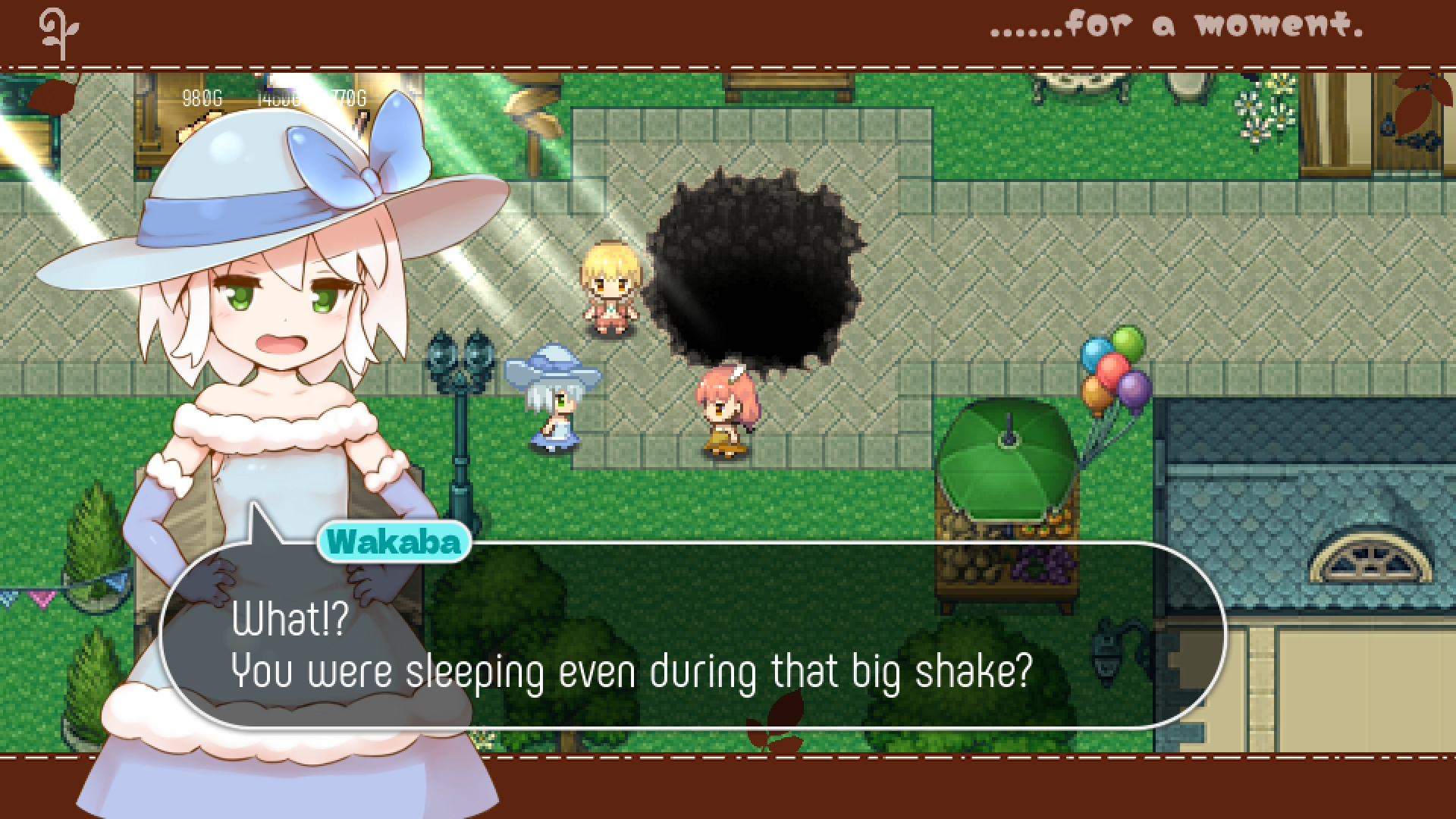
Section Three: Plot
One night, Hitsuji and Ayu awake in a “forest they don’t know”. In this Dream Dungeon, they rescue a rabbit named “Youcy”. What happens next is irrelevant — in fact, most of Hitsuji’s dreams only hammer she’s not a “normal human being”. The biggest takeaway from this encounter is that Hitsuji can see Youcy (because next time they meet, it won’t be in a dream).
After completing the third Dream Dungeon, they meet in the Marketplace. This time, Youcy is accompanied by Yess, a rabbit that recognizes Hitsuji as a “special human”. She takes her to “Master”, guardian of the Crystal of Purity and it’s counterpart, the Crystal of Evil. However, the Crystal of Purity has gone missing, rendering Master “unable to keep the balance” in Hitsuji’s world.
Halfway through the game and just now the overarching plot is revealed.
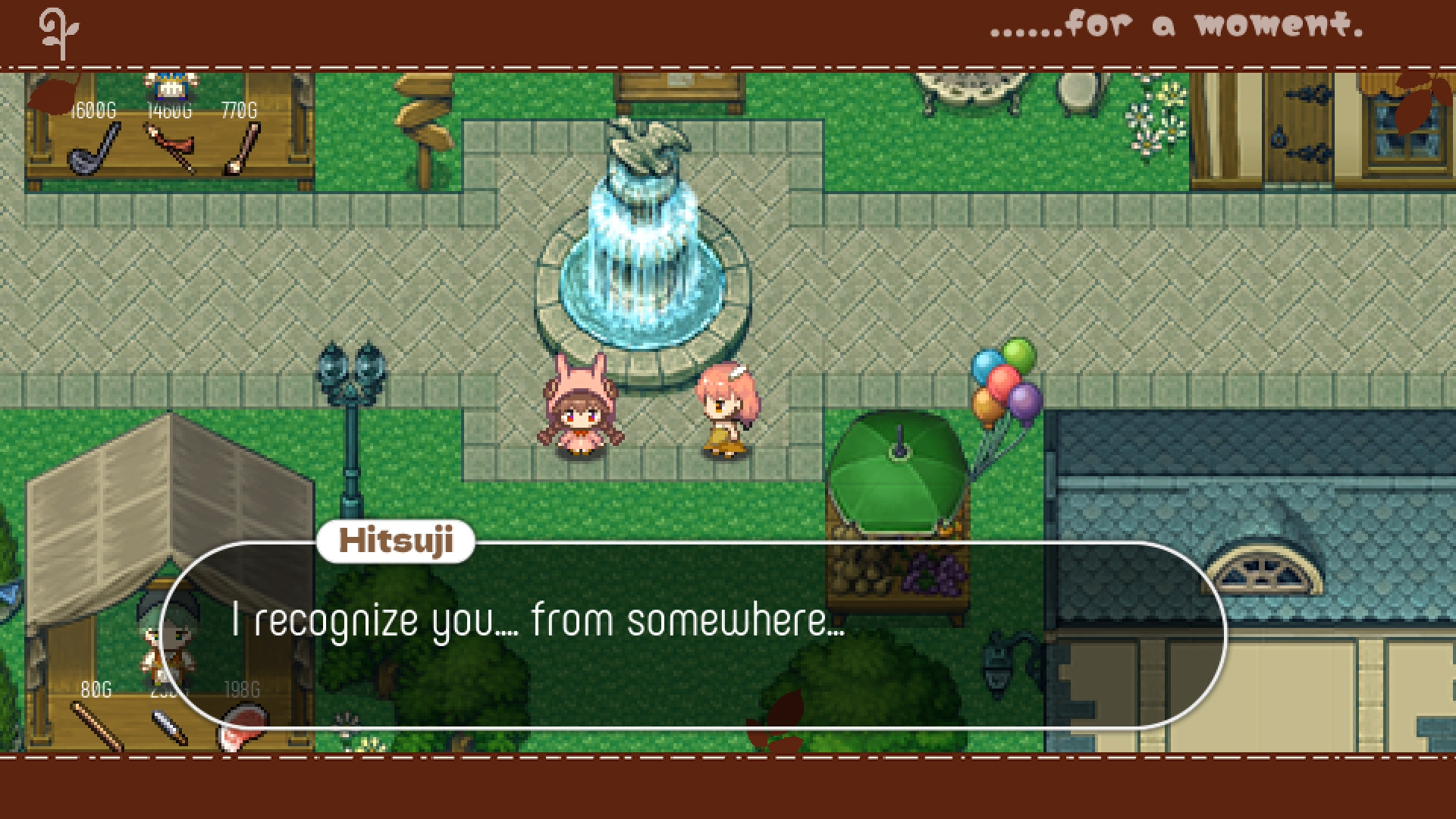
The significance of the sheep isn’t even revealed until reaching the end of the fifth (and technically final) Dream Dungeon. Hitsuji learns she is the “Hero who controls the Dreamsheep”. The next day, Yess and Youcy explain what happened to the Crystal of Purity.
At an undisclosed time, Hitsuji’s little brother rescued a rabbit on his own. Grateful for his help, she offered him a piece of “sweet candy” before they parted ways. . . but as it turned out, she confused “candy” for a “gem stone” — the Crystal of Purity.
I can’t help but wonder how the hell did Ayu eat a fucking crystal?!
After somehow extracting the Crystal from Ayu, Youcy and her friends destroy it during a humorous exchange. With the Crystal of Purity no longer in existence, Master basically says “fuck it” decides “It will be amusing to engulf the world with evil powers.” With the power that “rivals the gods”, Hitsugi is the only person in the world that can stop her.
Escorted by Yess and Youcy, she confronts Master for the final boss fight.
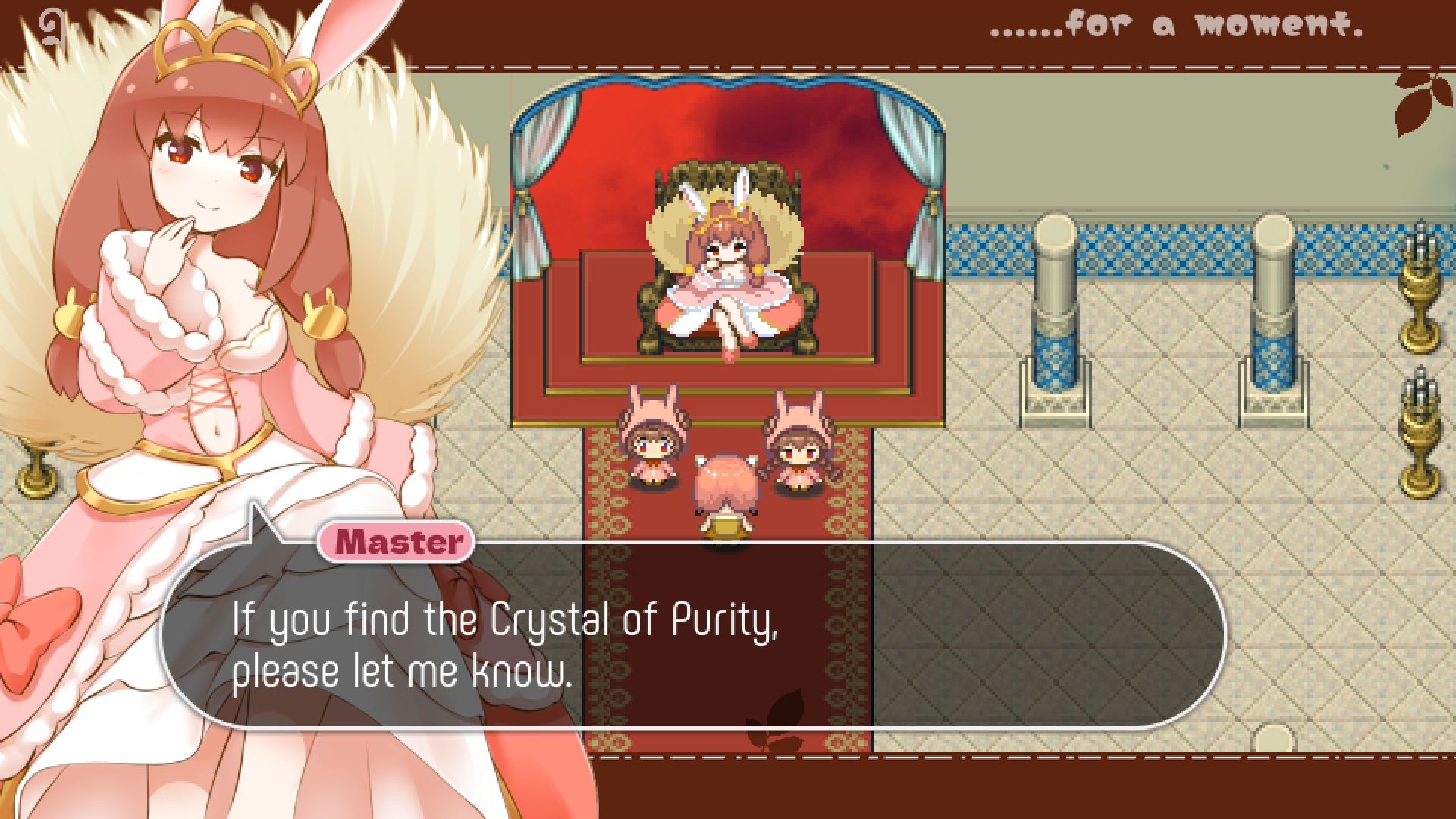
Section Four: Writing
In spite of the gross translation errors, the writing is surprisingly wholesome. Hutsuji, Wakaba and Amu are an adorable trio living their best lives as unsupervised children. If it wasn’t for the obscene sexual content in this game, it’d almost qualify as a sort of whimsical “slice of life”.
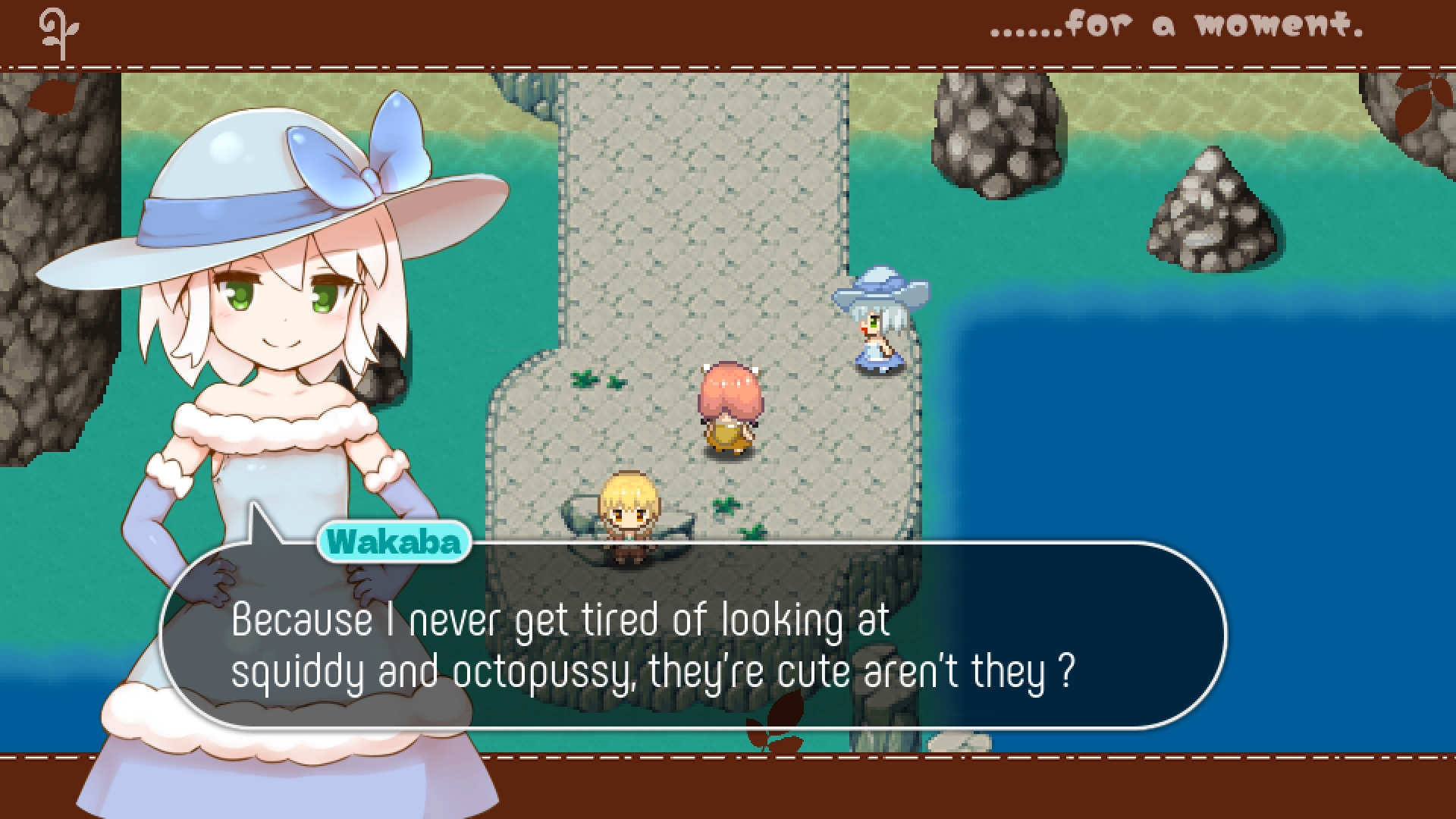
Chapter Five: Sound (4/5★)
Section One: Soundtrack
I enjoyed the music in and out of Dream Dungeons. It could have used a more variety, but the tracks are really catchy. I found it difficult to shake off the beats even after closing the application.
Section Two: Sound Effects
The sound effects are monotonous, but serviceable. Hitsuji sounds like an adorable Super Mario every time she swings her weapon. But I found cutscenes to be uncannily quiet — they feel incomplete with frequent stretches of dead silence.
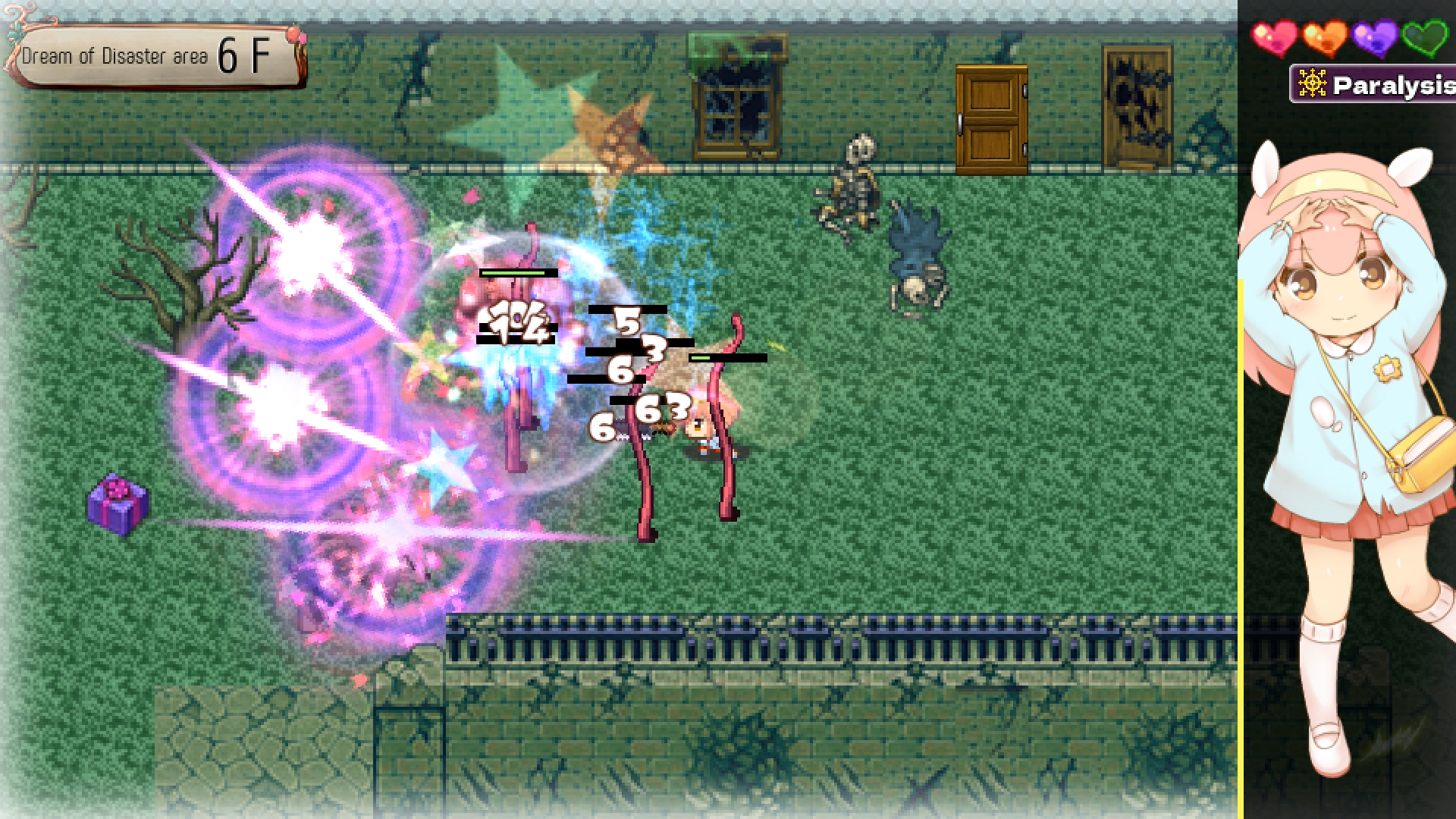
Section Three: Voice Acting
There are few spoken lines in the game, but I didn’t understand them because I can’t speak Japanese. But the audio quality is good! The voice actress for Hitsuji really drives sex-scenes home. Her microphone feedback is jarring, but it’s only noticeable when she screams.
The following clip is a small sample of Hitsuji’s voice acting.
Chapter Six: Visuals (3/5★)
Section One: User-interface
The user-interface is professionally made with some exceptions; the “hunger” bar is distinctly flat, a stark difference from the otherwise highly stylized “pause” menu and inventory; and the “status” icons feel out of place.
Translation errors are everywhere, but I had no problem navigating the user-interface. Regardless, Sheep in Dreams desperately needs an English proofreader. They could start by writing actually useful descriptions for items — I spent my playthrough under the impression I should be saving food as “ingredients” for a non-existent cooking mechanic.
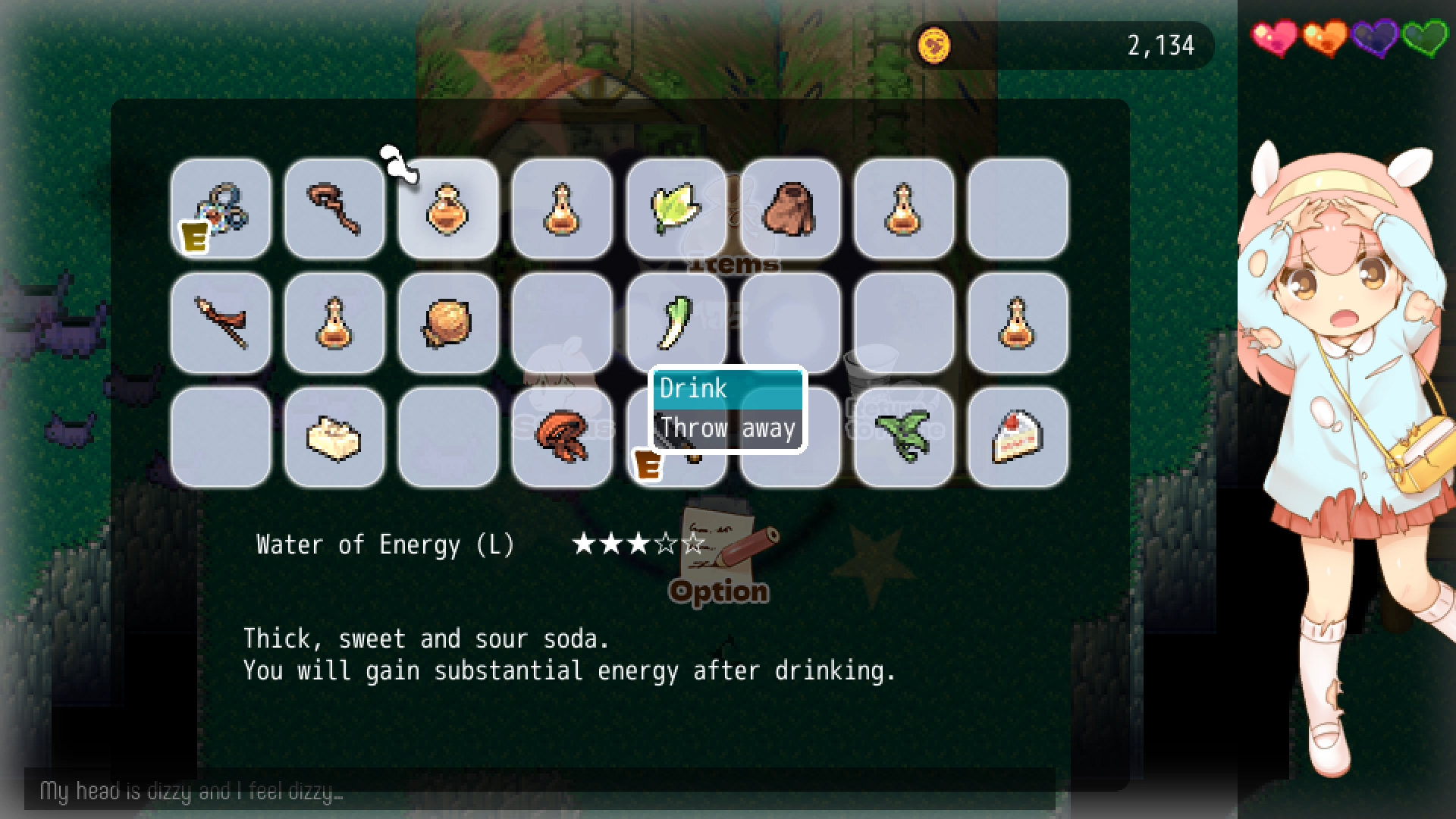
Section Two: Graphics
The sprite-work and visual effects are a delight. They can be overbearing by obscuring the action on-screen, but I enjoyed the challenge of weaving through fog and tree canopies. However, the sprites are not consistently scaled. The mixture of sharp and blurry assets cheapen the game.
The following image is a great example of what I’m talking about; shown are a variety of sprites of differing resolutions. Pay close attention to the tentacles, the shelf, and the level itself.
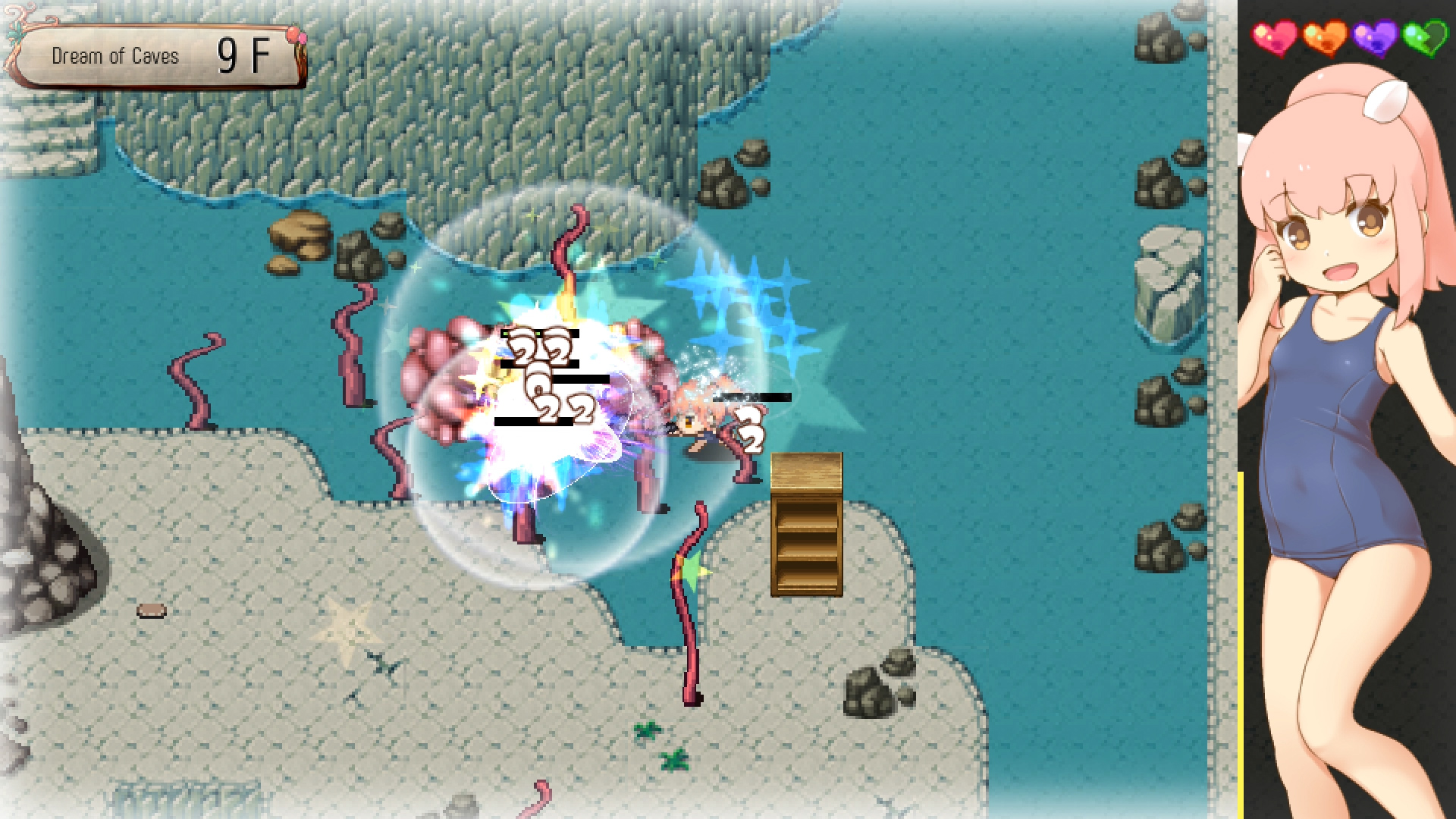
Chapter Seven: Verdict (3/5★)
Between stability and gameplay balance, I find it hard to recommend this game. It’s a shame, because Sheep in Dreams is beautiful game with an adorable protagonist. The number of times the application crashed was infuriating! In this game, you can only save before starting a level — whether or not I’d lose thirty or forty minutes of progress at the end of each Dream Dungeon was a coin toss. But between crashes, Sheep in Dreams is an almost “okay” game. If combat was slightly more interesting and roguelike elements better balanced, it’d a solid game.
